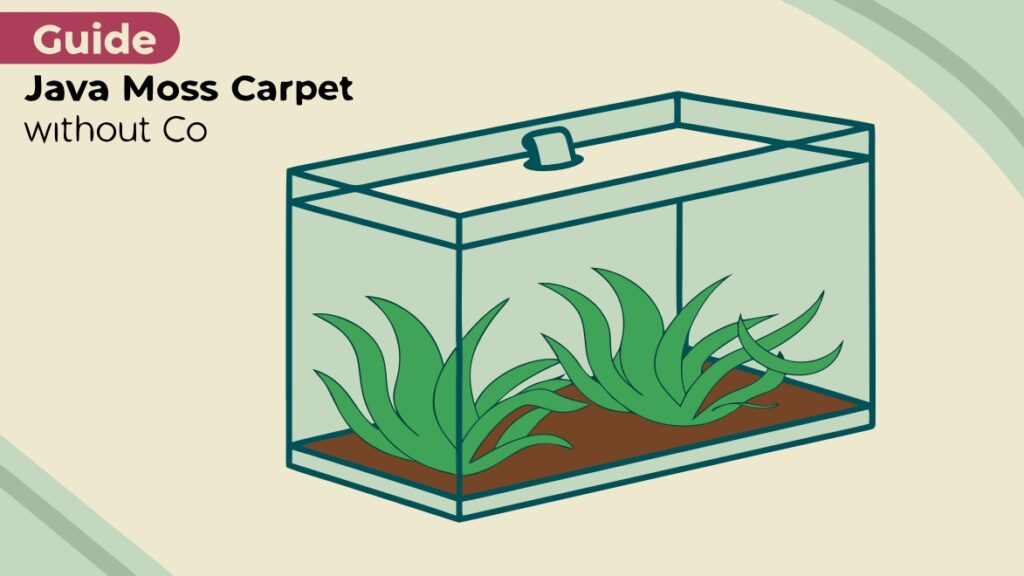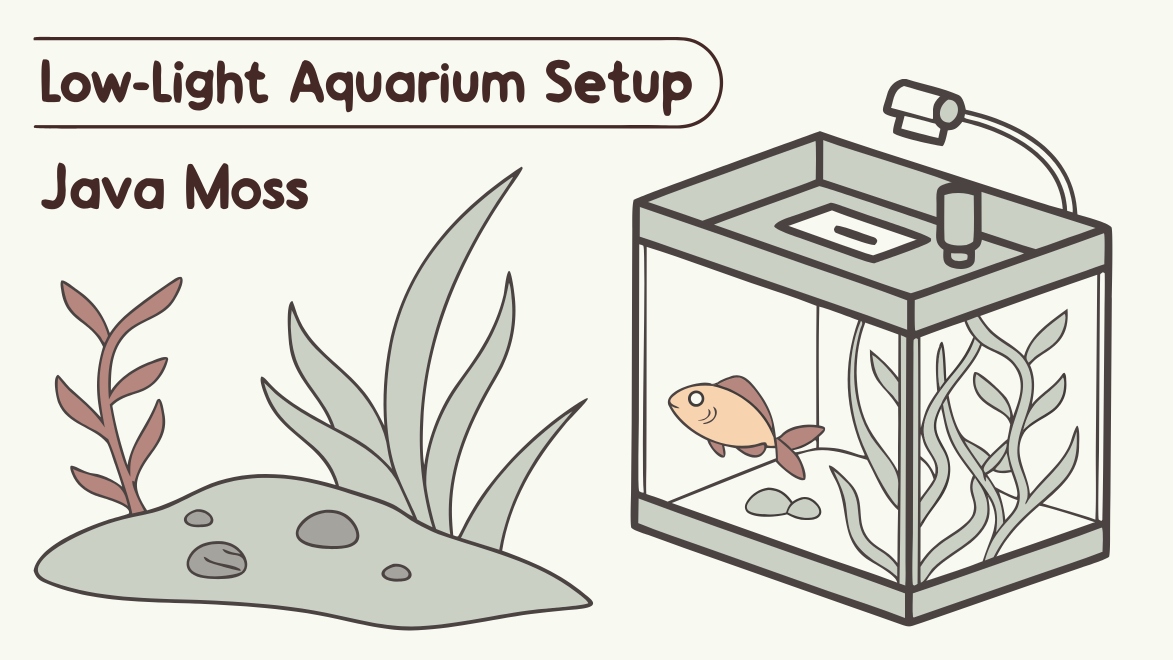Aquascaping a nano tank can be one of the most rewarding aspects of fishkeeping, especially when working with hardy and versatile plants like Java moss (Taxiphyllum barbieri). Many aquarists dream of carpeting their substrate with lush greenery, but often assume that CO₂ injection and high lighting are necessary to achieve this effect. Fortunately, that’s not true.
With proper techniques, you can create a beautiful, low-light Java moss carpet without CO₂ injection, making it an ideal choice for small setups like betta and shrimp tanks. This guide will walk you through everything you need to know — from tank preparation and planting methods to lighting, trimming, and long-term maintenance.
Why Java Moss is Perfect for Nano Tanks
1. Hardy and Low-Light Friendly
Java moss is among the most forgiving aquarium plants. It thrives under low to moderate lighting and does not require CO₂ supplementation, making it perfect for beginners and nano aquariums.
2. Natural Habitat for Shrimp and Betta
Java moss provides hiding spaces and grazing surfaces for shrimp, while bettas enjoy resting on its soft mats. Its fine fronds accumulate biofilm, which is a natural food source for shrimp.
3. Easy to Shape into Carpets
Unlike root-feeding plants, Java moss attaches itself to surfaces like mesh, rocks, and driftwood. This allows aquarists to shape it into lush carpets or walls without advanced aquascaping equipment.

Step-by-Step: Creating a Java Moss Carpet Without CO₂
Step 1: Preparing Your Nano Tank
- Tank size: 5–20 gallons works best for betta or shrimp nano tanks.
- Substrate: Nutrient-rich substrate isn’t necessary since Java moss absorbs nutrients directly from the water column. Any sand or fine gravel works.
- Filtration: A gentle sponge filter or low-flow hang-on-back filter prevents moss detachment and keeps shrimp safe.
- Water parameters:
- Temperature: 72–80°F (22–27°C)
- pH: 6.5–7.5
- Hardness: 4–15 dGH
Step 2: Choosing Planting Methods
There are several ways to create a Java moss carpet in low-light tanks:
- Mesh Carpet Method
- Spread Java moss evenly over stainless steel or plastic mesh.
- Secure it with fishing line or cotton thread.
- Place the mesh flat on the substrate.
- Over time, moss grows upward, forming a dense carpet.
- Stone Planting Method
- Tie Java moss to flat stones or slate pieces.
- Position them side by side on the substrate.
- As moss spreads, it covers the gaps, creating a natural carpet.
- Direct Substrate Attachment (less common)
- Lay Java moss directly onto sand or gravel.
- Anchor it lightly with pebbles or mesh.
- This method is harder to maintain but gives a natural look.
Step 3: Lighting for a Low-Light Carpet
Even though Java moss doesn’t require strong light, the right balance is essential for healthy growth.
- Lighting intensity: 15–30 PAR at substrate level.
- Duration: 6–8 hours daily (avoid longer to prevent algae).
- Light type: LED lights marketed for freshwater planted tanks (6,500–7,500K spectrum).
Pro tip: Avoid over-lighting. In non-CO₂ tanks, too much light encourages algae, which can suffocate your moss.
Step 4: Fertilization Without CO₂
Java moss absorbs nutrients from the water, so occasional fertilization helps:
- Liquid fertilizers: Dose sparingly once a week (use shrimp-safe brands).
- Iron and potassium: Beneficial for maintaining green color.
- Avoid root tabs: They’re unnecessary since moss doesn’t root.
Step 5: Maintenance & Trimming
Without trimming, Java moss carpets can become tangled and collect debris.
- Trim regularly: Every 2–3 weeks with sharp scissors.
- Vacuum lightly: Use a gravel vacuum to remove detritus without sucking up moss.
- Prevent overgrowth: Overgrown moss can block light from reaching lower layers.
Keeping Java Moss Healthy in Low-Light Tanks
Common Issues and Solutions
- Algae Growth: Reduce light hours and increase water changes. Add Amano shrimp or nerite snails.
- Detachment: Use more thread or mesh to secure moss until it anchors.
- Browning Tips: Increase water flow slightly and dose liquid fertilizer.
Ideal Tank Mates for Java Moss Carpets
- Shrimp: Cherry shrimp, Amano shrimp, and Crystal shrimp thrive in mossy carpets.
- Bettas: Appreciate soft resting surfaces and shaded zones.
- Small schooling fish: Neon tetras or celestial pearl danios add activity without uprooting moss.
Conclusion
Creating a Java moss carpet in a low-light, non-CO₂ nano tank is both achievable and rewarding. With simple tools like mesh or stones, moderate lighting, and routine trimming, aquarists can cultivate a thriving underwater carpet that benefits both bettas and shrimp.
This aquascaping approach is low-maintenance, budget-friendly, and beginner-friendly, yet still delivers stunning results. By understanding how Java moss grows and adapting its care to a small-scale environment, you can transform your nano aquarium into a lush, living aquascape.
References
- Kasselmann, C. (2019). Aquarium Plants. 3rd Edition.
- Barr, T. (2006). “Non-CO₂ Methods in Planted Aquaria.” The Barr Report.
- Tropica Aquarium Plants. (2023). “Java Moss Care Guide.”
- Aquascaping Wiki. (2024). “Low-Tech Moss Carpets in Nano Aquariums.”

